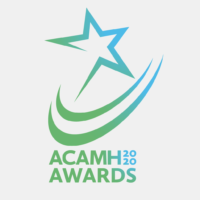Risk prediction
-

Developmental co-occurrence of psychopathology dimensions in childhood
Open Access paper from JCPP Advances – “Here, we aim to determine whether and to what extent directional relationships between psychopathology dimensions within-person, and between individuals within families, play a role in comorbidity”. Andrea G. Allegrini (pic) et al
Read more -

Editorial: Polygenic risk scores and early manifestations of attention-deficit/hyperactivity disorder
Open Access paper from JCPP Advances – “Results from a series of multilevel random-effects meta-analyses suggested that pre-school children with current or later-emerging ADHD are likely to experience difficulties in multiple neurocognitive and behavioural functions”. Henrik Larsson (pic) and Guilherme V. Polanczyk
Read more -

Relative age in the school year and risk of mental health problems in childhood, adolescence and young adulthood
Open Access paper from the JCPP – “We used a regression discontinuity design to examine the effect of relative age on risk of mental health problems using data from a large UK population-based cohort ALSPAC. We compared risk of mental health problems between ages 4 and 25 years using the parent-rated Strengths and Difficulties Questionnaire (SDQ), and depression using self-rated and parent-rated Short Mood and Feelings Questionnaire (SMFQ) by relative age”. Thomas Broughton (pic) et al.
Read more -

Are ACE scores useful for identifying individuals at risk of health problems?
Clinics are increasingly screening for ACEs, but ACE scores may not tell us who will go on to develop poor health, explain Jessie R Baldwin (pic) and Andrea Danese.
Read more -

JCPP Advances Editorial: Volume 01, Issue 02, July 2021
Editorial: ‘Causation and prediction in child and adolescent mental health research’ by Henrik Larsson
Read more -

How can we model the brain when it goes awry? How Reinforcement Learning Models can shed light on Psychiatric Disorders that emerge during Development.
It is well-established that many psychiatric disorders initially emerge during the formative time periods of childhood and adolescence (Kessler et al., 2005; Paus, Keshavan, & Giedd, 2008), when the brain is consistently subject to growth and experience-related changes. This applies not only to classic neurodevelopmental disorders like attention deficit hyperactivity disorder (ADHD) but also to psychiatric disorders like depression or obsessive-compulsive disorder (OCD), which are often attributed to adulthood (Hauser, Will, Dubois, & Dolan, 2019).
Read more -

Making personalised predictions of poor functioning following negative childhood experiences
Experiencing abuse, neglect, bullying, or domestic violence in childhood increases the likelihood of having poor functioning in young adulthood, but this is not the case for everyone. Being able to accurately predict which individuals are at high risk for poor outcomes following such negative childhood experiences could support professionals to effectively target interventions. Is it possible to make accurate personalised predictions?
Read more -

November 2020 – The Bridge
The research featured in this issue covers a wide range of topics relevant to our work with young people, including neurodevelopmental, emotional, and behavioural disorders, their comorbidity, and their links with functioning and quality of life.
Read more -

Results of the ACAMH Awards 2020
Congratulations to all winners and nominees of the ACAMH Awards 2020.
Read more -

Genetic and environmental influences on callous-unemotional traits vary with age
Research on callous-unemotional (CU) traits explores the relative importance of genetic versus environmental influences on the initial risk and trajectory.
Read more